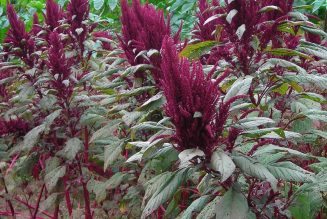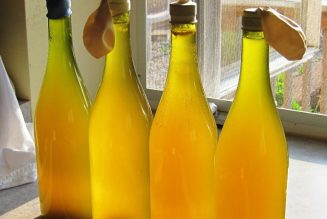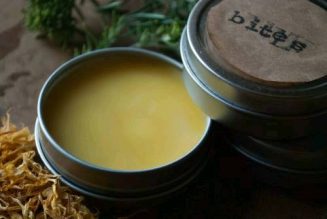There are hundreds of plants used all over the world, which are used in herbal medicine as treatments for bacterial infections. Here are some of the most accessible and reliable.
Bayberry (Myrica cerifera): stimulating the flow of bile, and also exhibits antibacterial activity. Use this herb externally as a poultice.
Cinnamon (Cinnamomum zeylanicum): is an ancient herbal remedy found in the Chinese Materia Medica. Various terpenoids found in the volatile oil including eugenol and cinnamaldehyde account for cinnamon�s medicinal effects. Both cinnamaldehyde and cinnamon oil vapors are potent anti-fungal compounds. Antibacterial actions have been found in cinnamon.
Cranberries (Vaccinium macrocarpon) : The medicinal benefits of cranberries have been touted in news reports for years, recognizing the small, four air-chambered berry for its ability to protect against urinary tract infections. However, new research suggests that not only does the cranberry, available in both white and red varieties, fight against bacterial infections in the urinary tract, but it is also associated with potentially lowering LDL cholesterol and slowing cancer cell growth.
Eucalyptus (eucalyptus globulus): It’s been known for some time that extracts of eucalyptus oil inhibit the growth of some bacteria. Antibacterial activities of eucalyptus globulus leaf extract against isolated bacteria were investigated by determining minimum inhibitory concentration (MIC) and minimum bactericidal concentration (MBC). methods. It is concluded that eucalyptus globules leaf extract is effective against isolated bacteria.
Garlic (Allium sativum): The ancient Egyptians attached great importance to garlic, and used it as a money exchange. Folklore has always claimed that garlic is a great healer, and there is actually a lot of scientific evidence to support that claim. Allicin is the compound responsible for the healing benefits of garlic. Garlic’s antibacterial characteristics have been tested even against drug-resistant varieties, and shown to have therapeutic activity. The sulfides in garlic may work in a way similar to that of penicillin and sulfa drugs, to counter the growth of bacteria.
Goldenseal (Hydrastis canadenis): Goldenseal is a native American medicinal plant introduced to early settlers by Cherokee Indians who used it as a wash for skin diseases, wounds, and for sore, inflamed eyes. Its roots are bright yellow, therefore, this is how it gets it’s name. Goldenseal root has acquired a considerable reputation as a natural antibiotic and as a remedy for various gastric and genitourinary disorders.
Myrrh (Commiphora Myrrha): Myrrh is a gum resin that has been used since ancient times. The Egyptians used it to embalm bodies, and in biblical times it was one of the herbs brought by the Three Wise Men. Myrrh constituents are antibacterial and antifungal, exhibiting activity against e.coli, staphylococcus, and candida albicans, an overgrowth of which leads to yeast infections. Its antiseptic and disinfectant properties make it useful as a wash on cuts, burns and skin infections. Gargle several drops of tincture in water to relieve a sore throat. Use diluted myrrh as a mouthwash or apply the powder on the mucus membranes inside of the mouth to treat mouth sores and thrush.
Olive Leaf Extract: is an extraordinary herbal antibacterial as well as, antiviral extract. Obtained from specific parts of the olive tree (Olea europaea), this new proprietary phytochemical extract is not only safe, but is also a nontoxic immune system builder. Olive Leaf Extract has been used clinically in its present form for over a year.
Tea Tree (Melaleuca altermifolia) : is the extracted oil from Melaleuca altermifolia tree native to Australia. The oil is extracted by steam distillation from the leaves of the tree and has been used by Australian aborigines for several centuries. Now the tree is grown all over the world for its medicinal properties. As an antibacterial agent, tea tree oil is said to alleviate hemorrhoids, and treat candidiasis and other vaginal infections. As an antifungal, tea tree oil has been used for years in the treatment of athlete’s foot, ringworm, and nail infections.
Turmeric (Curcuma longa): Curcumin, the yellow color pigment of turmeric, is produced industrially from turmeric oleoresin. The healing properties of turmeric have made it a most sought after ingredient in cosmetics and drugs, as the leaf oil and extract can also be used as sunscreens and bio-pesticides. It is well recognized as the best anti-oxidant, hypoglycemic, colorant, antiseptic and wound healer.
Yellow Dock (Rumex crispus): has been used for hundreds of years for its astringent properties, treating a variety of skin problems, including boils, rashes, blemishes and burns. Yellow dock is valued as an antibacterial agent and even more as one of the best available sources of iron. Yellow dock’s high iron content makes it beneficial for treating anemia and pregnant women. Yellow Dock also contains vitamin C, vitamin A, calcium and phosphorous.






















